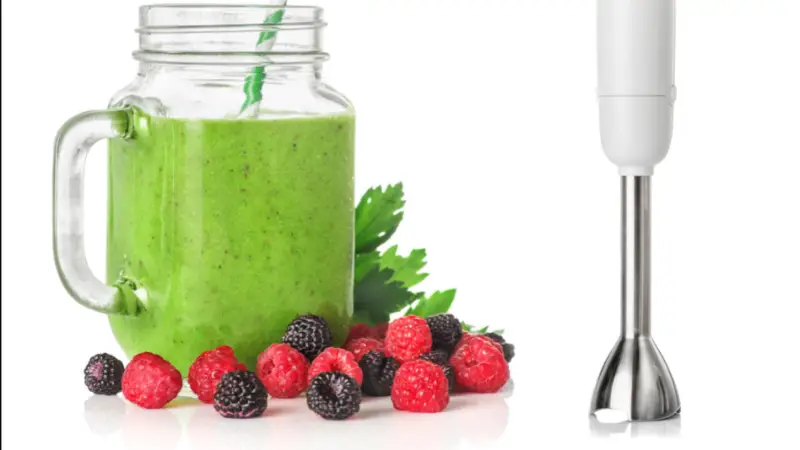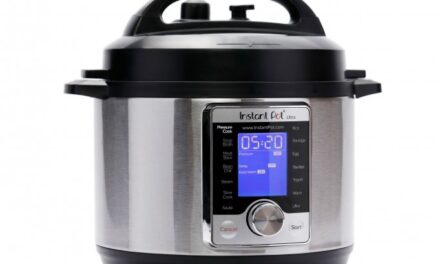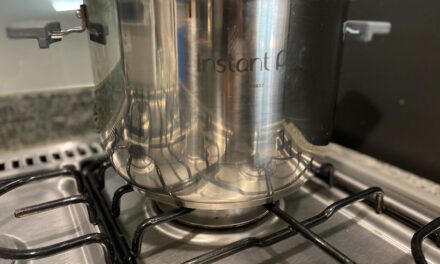Hand blenders make it possible to efficiently blend ingredients in almost any container. But is it safe to use a hand blender in a glass bowl?
As a general rule, you can use a hand blender in a glass bowl. Some caution should be exercised to avoid potential cracks in the glass, but encountering problems with this combination is rare.
If you are a fan of the hand blender and prefer to use glass bowls for your mixing, read on to find out how these two elements work together.
Can I Use a Hand Blender in a Glass Bowl?
The hand blender dates back to the 1950s, when it was invented to provide a more efficient approach to blending.
This revolutionized the home kitchen by empowering all types of cooks to simplify the process.
Its main benefit is being able to use it in the same container, but does glass crack from the force of the blender?
Based on the average user experience, a hand blender can be used in a glass bowl or glass containers.
Safety measures should be taken into consideration, but when those are in place there is no reason to fully avoid glass containers.
The most important aspect when considering this combination is to approach it with caution.
Glass can be fragile, but most bowls and containers made for cooking are sturdy enough to deal with the usual force of a hand blender.
How to Use a Hand Blender in a Glass Bowl
If you would like to know more about the safety precautions to take when using a hand blender in a glass bowl, we’ve prepared a few tips for you.
This should make you feel more in control and will allow you to enjoy the experience without worrying.
You can use hand blenders in glass bowls. To properly use a hand blender in a glass bowl, follow these tips:
- Be gentle with hand mixer movements.
- Use high quality glass bowls.
- Scrape the sides of the bowl with a spatula.
Avoid Using Too Much Force
While most glass bowls can withstand a good amount of force, you can avoid most problems by not using too much force.
Whether you use a glass bowl or a glass Mason jar, you should keep the hand blender on a low setting and not bang on the sides.
Keep your grip on the hand blender firm but not aggressive, and use vertical movements from top to bottom to keep the mix smooth.
The blades of the blender are not as forceful as they may seem, but you should be careful where you aim them. Try to keep the blender from hitting the bottom of the bowl too often.
Use Higher Quality Glass Bowls
Cheap glass will shatter more easily than the more expensive versions.
You don’t have to go all out and purchase only premium glass bowls, but a slight upgrade will reduce the risk of shattering.
This will also give you more peace of mind when using a hand blender in a glass bowl.
The bowl will be able to withstand the slight impact of the blender better, and will avoid the hassle of having to deal with shattered glass all over your ingredients.
Use a Spatula for the Sides
When using a hand blender, you will get some of the mixture all over the walls of the container.
You may not want to waste that part, but you should avoid aiming the hand blender at the sides of the glass bowl.
A better tactic would be to keep a convenient rubber spatula to hand. This will help you scrape the excess that has made its way up the sides of the glass bowl.
You can add the mixture back to the rest, and continue enjoying your hand blending experience.
Using a spatula will reduce waste, and it will also prevent potential cracks from using the hand blender.
Before you start using the hand blender, place the spatula next to you so that it’s ready the moment you need it.
When the spatula is ready to be used, power down the blender and scrape the sides until you are content.
Then you can resume the blending process to get the smooth results you are looking for.
What Should You Not Use a Hand Blender With?
A hand blender can be easily used with most types of containers, especially taller ones to reduce the risk of splashing.
You will sometimes see that glass bowls should be avoided, but with enough precautions you will be able to use them.
You should not use a hand blender with a container that has a non-stick coating. The blades of the hand blender may scratch the coating, which would render it useless.
Other than this, you can experiment with plenty of other materials, from plastic to aluminum.
Remember to tone down the firmness of the blending, and you will see great results from most materials, including glass.
Conclusion
You can usually use a hand blender in a glass bowl.
There is the risk of cracking or shattering with a material like glass, but with some simple precautions you can significantly reduce the risk of that happening.





